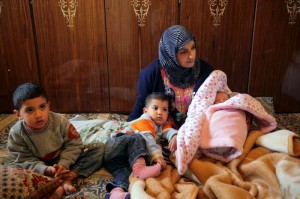IOM presents impact of past and present migration policies for Paraguay
Tuesday, March 20th, 2012 11:19:01 by Fayyaz Yaseen
IOM presents impact of past and present migration policies for Paraguay
A newly released IOM Migration Profile for Paraguay defines 1870, the end of the War of the Triple Alliance between Argentina, Brazil and Uruguay against Paraguay, as a pivotal point for an immigration policy aimed at repopulating
the land-locked South American nation.
With an estimated death toll of up to 300,000 and an economy in ruins, post-war governments focused on agricultural colonization through immigration to rebuild its primary productive sector.
But the policy failed to attract the desired immigration from Europe. The flow of European migrants into Paraguay was 100 times smaller than the numbers arriving in the victorious countries: Argentina, Brazil and, to a lesser extent, Uruguay.
Exacerbating the need to repopulate the country, there was a dramatic increase in emigration to neighbouring countries, especially Argentina.
Although this trend continued almost to this day, small groups of European and North American migrants arrived in Paraguay and made their mark, establishing important agricultural colonies and cities, and becoming socially and culturally integrated into the
Paraguayan population.
Anarchy, political instability, civil wars and a long and highly repressive dictatorship that characterized most of the twentieth century were decisive push factors for increased emigration flows, which expanded to other countries in the region and beyond,
namely the United States, Spain, Italy and France.
During the mid-1960s, the single largest flow of immigrants to Paraguay came from Brazil and was significant because of its impact on consolidating a high-tech agricultural and livestock production model that required a small labour force.
This model, linked to large transnational corporations working in cereal and meat exports, served only to intensify the most recent emigration flows, driven primarily by the simultaneous expansion of a highly informal labour market
characterized by underemployment and unemployment, affecting mainly young people and women.
The Migration Profile explains how Paraguayan emigration is influenced by fluctuations in the economic development and labour market of countries of destination. This explains how the Argentine economic crisis of the 1990s and the restrictive immigration policy
implemented by the European Union led to high levels of vulnerability among Paraguayan migrants, leading to the return or repatriation of relatively large groups.
However, this did not stop Paraguayans from wanting to emigrate as soon as conditions in these countries showed signs of improvement. But the migrant population remains highly vulnerable due to low wages, their irregular status and precarious conditions of
employment.
The Migration Profile points to the regularization policy implemented in Argentina since 2000 as a significant factor that has improved the situation for Paraguayan migrants in that country.
Tags: impact, IOM, Migration, Paraguay, PoliciesShort URL: https://www.newspakistan.pk/?p=16559

















